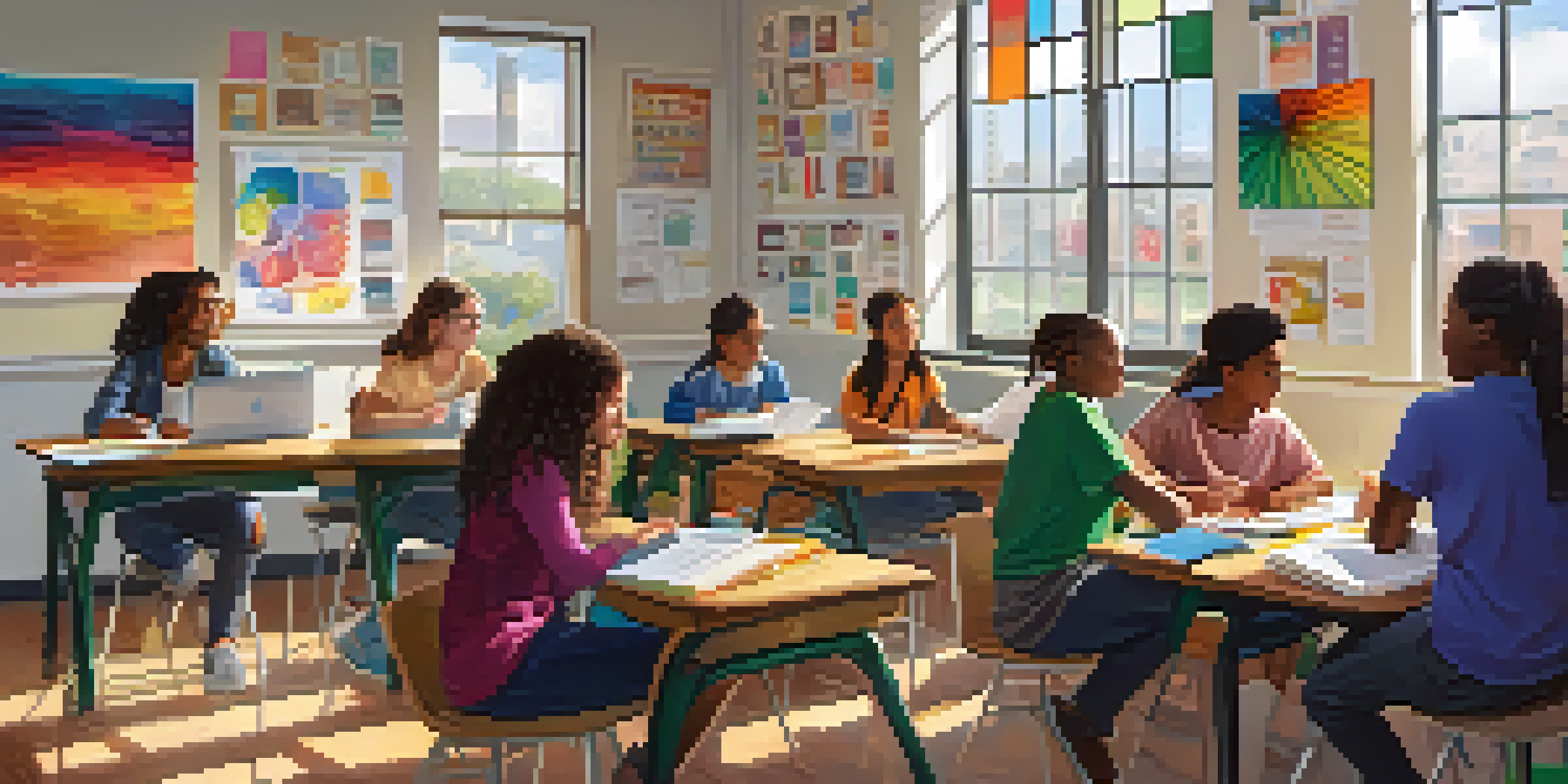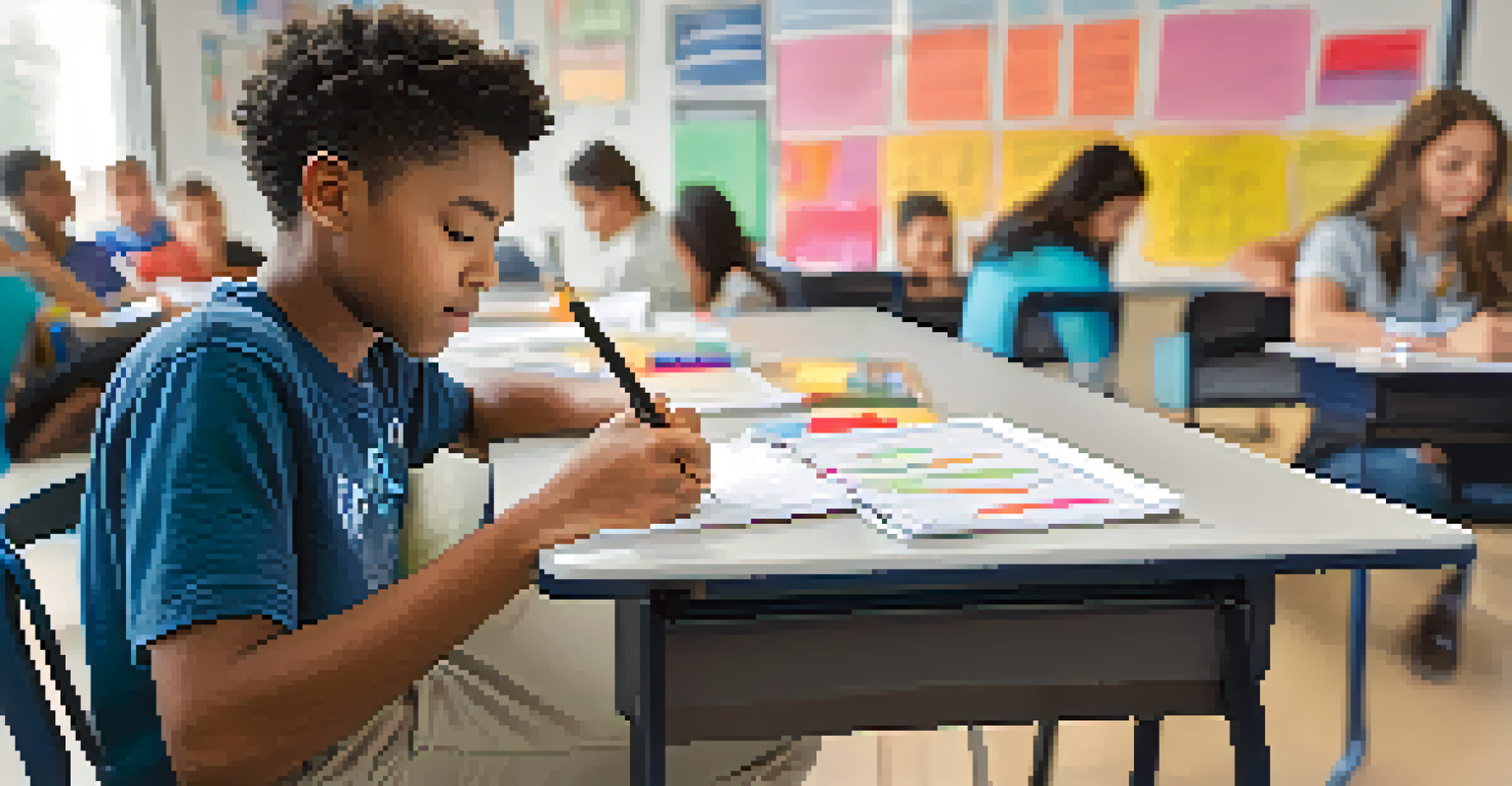Effective Strategies for Student Engagement in Pathways

Understanding Pathways: What They Are and Why They Matter
Pathways programs are designed to provide students with structured routes toward their academic and career goals. These programs often combine academic coursework with hands-on experiences, helping students to see the relevance of their studies in real-world contexts. Understanding the significance of pathways can motivate students, making them more engaged and invested in their education.
Education is the most powerful weapon which you can use to change the world.
When students recognize how their education connects to future opportunities, it sparks a sense of purpose. This connection is crucial in fostering engagement, as students are more likely to participate actively when they see the bigger picture. By leveraging real-life examples and success stories, educators can illustrate the impact of pathways on students' lives.
Ultimately, the goal is to create an environment where students feel empowered and committed to their learning journey. When students understand the 'why' behind their education, they are more likely to engage deeply with the content and the program as a whole.
Building Relationships: The Key to Student Engagement
Establishing strong relationships between students and educators is foundational for engagement. When students feel respected and valued, they are more likely to participate and share their thoughts openly. This sense of belonging can be cultivated through regular check-ins, open communication, and creating a supportive classroom environment.

It's essential to recognize each student's unique background and perspective. Personalizing interactions and showing genuine interest in their experiences can help foster deeper connections. For example, incorporating icebreaker activities at the start of a course can break down barriers and encourage students to engage with one another and their instructors.
By prioritizing relationship-building, educators can create a safe space where students feel comfortable expressing themselves. This supportive atmosphere not only enhances engagement but also promotes collaboration and teamwork among peers.
Incorporating Technology: Engaging Students in a Digital World
In today's digital age, incorporating technology into pathways programs can significantly boost student engagement. Tools like interactive learning platforms, educational apps, and virtual simulations can make learning more dynamic and accessible. By integrating technology, educators can meet students where they are and cater to diverse learning styles.
The beautiful thing about learning is that no one can take it away from you.
For instance, using gamified learning techniques can turn traditional lessons into exciting challenges. This approach not only captures students' attention but also encourages healthy competition and collaboration. Moreover, online discussion forums can provide students with a platform to share ideas and engage with peers beyond the classroom setting.
However, it's important to strike a balance between digital and face-to-face interactions. While technology can enhance engagement, maintaining personal connections is equally vital. A blended approach that combines both elements often yields the best results in keeping students actively involved.
Hands-On Learning: Making Education Relevant and Practical
Hands-on learning experiences are a powerful way to engage students in pathways programs. When students can apply theoretical concepts to real-life situations, they are more likely to grasp the material and retain information. This experiential learning can take many forms, from internships and workshops to project-based assignments.
For example, organizing field trips to local businesses or community organizations can provide students with invaluable insights. Such experiences not only deepen their understanding of the subject matter but also help them build connections in their future career fields. Furthermore, involving industry professionals as guest speakers or mentors can enrich the learning experience.
Ultimately, hands-on learning bridges the gap between academia and the professional world, making education feel relevant and impactful. By engaging students in practical applications, educators can inspire enthusiasm and motivation, leading to a more invested learning experience.
Encouraging Student Voice: Empowering Learners in Their Journey
Encouraging student voice is crucial in fostering engagement. When students feel that their opinions and ideas matter, they become more active participants in their educational journey. Creating opportunities for students to share feedback, suggest topics, or lead discussions can empower them and enhance their commitment to learning.
For instance, implementing regular feedback sessions or surveys can give students a platform to express their thoughts on the curriculum. This practice not only helps educators understand students' perspectives but also shows that their input is valued. Additionally, allowing students to choose their project topics or presentation formats can spark creativity and enthusiasm.
When students have a stake in their education, they are more likely to take ownership of their learning. Empowering student voice cultivates a sense of responsibility and accountability, leading to greater engagement and success in pathways programs.
Creating Collaborative Learning Environments: Teamwork in Action
Collaboration is a powerful driver of student engagement. When students work together on projects or assignments, they can learn from one another and develop critical teamwork skills. Creating opportunities for collaborative learning can foster a sense of community and make the educational experience more enjoyable.
Group activities, peer teaching, and team-based projects can encourage students to share their strengths and support each other. For example, assigning roles within a group can help students understand their contributions while promoting accountability. This collaborative approach not only enhances engagement but also prepares students for future work environments where teamwork is essential.
Moreover, collaboration can lead to deeper understanding and retention of material. When students discuss concepts and problem-solve together, they are actively engaging with the content, making it more likely that they will remember what they've learned. By cultivating a collaborative learning environment, educators can boost engagement and enhance the overall learning experience.
Promoting Growth Mindset: Encouraging Resilience in Students
Fostering a growth mindset among students can significantly enhance their engagement. A growth mindset is the belief that abilities and intelligence can be developed through dedication and hard work. By promoting this mindset, educators can encourage students to embrace challenges and view failures as opportunities for learning.
For instance, teachers can highlight stories of individuals who faced setbacks but ultimately succeeded through perseverance. Sharing such examples can inspire students to adopt a similar attitude toward their own learning. Additionally, providing constructive feedback that focuses on effort and improvement can reinforce the idea that growth is a continuous process.

When students believe in their capacity to learn and grow, they are more likely to take risks and engage actively in their education. By promoting a growth mindset, educators can create a culture of resilience that empowers students to tackle challenges head-on and remain committed to their pathways journey.
Evaluating Engagement Strategies: Continuous Improvement for Success
Regularly evaluating engagement strategies is essential for continuous improvement. By assessing the effectiveness of different approaches, educators can identify what works and what doesn't, ensuring that students remain engaged over time. This evaluation process can involve gathering feedback from students and analyzing participation metrics.
For example, conducting end-of-semester surveys can provide valuable insights into students' experiences and perceptions of the program. Educators can use this information to make informed adjustments to their teaching methods and materials. Additionally, observing classroom dynamics and participation levels can help identify areas for improvement.
By fostering a culture of reflection and adaptation, educators can stay responsive to students' needs. This ongoing commitment to evaluating and refining engagement strategies ultimately leads to a more effective and fulfilling educational experience for students in pathways programs.